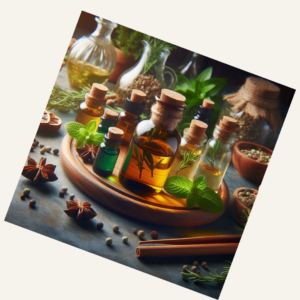Available in:
Reiki Symbol Blends (used for attunements, and increasing the potency of Reiki empowerments and initiations)
Dai Koo Myo (The Master Symbol)
Ingredients: Sitka, Cistus, Aloes, Frankincense Vital
5ml and 2ml rollerball
Sei He Ki (Symbol for emotional and Mental Healing)
Ingredients: Benzoin, Thyme Linalool, Patchouli Selatan, Mandarin Petitgrain, St.John’s Wort
5ml and 2ml rollerball
Hon Sha Ze Sho Nen (distant healing)
Ingredients: Bakul, Marjoram, Guggul
5ml and 2ml rollerball
Cho Ku Rei (Power Symbol)
Ingredients: Spikenard, Aloes, Arnica, Galbanum
5ml and 2ml rollerball
Reiki Symbol Blends Kit 5ml
Reiki symbols are powerful tools used in the practice of Reiki healing, an ancient Japanese technique that promotes relaxation, stress reduction, and healing through the use of universal life energy. Reiki practitioners use these symbols as part of their healing process to channel energy to others or themselves. Each symbol has its own specific meaning and purpose and is intended to activate different aspects of healing and energy work.
Reiki symbols are typically used by practitioners who have undergone Reiki attunements in which they are “initiated” or “empowered” by a Reiki Master to use the symbols effectively.
1. Cho Ku Rei (Power Symbol)
- Meaning: The Cho Ku Rei symbol is often referred to as the “Power Symbol” or the “Shakti symbol”. In Japanese, “Cho Ku Rei” translates to “Place the Power of the Universe Here” or “I am the light”.
- Purpose: This symbol is primarily used to focus and amplify the flow of universal life force energy (also called Ki or Chi) during Reiki treatments. It is commonly used to strengthen energy, clear blockages, and enhance the power of the healing process.
2. Sei He Ki (Mental and Emotional Healing Symbol)
- Meaning: Sei He Ki translates to “The God and Man united” or “Mind/Body Healing” in Japanese. This symbol is used to harmonize the mind and body, particularly for mental and emotional healing.
- Purpose: This symbol is used to help with emotional and mental clearing, such as addressing issues like stress, anxiety, depression, and unresolved emotions. It is also used to help bring balance and harmony into relationships and situations.
3. Hon Sha Ze Sho Nen (Distance Healing Symbol)
- Meaning: Hon Sha Ze Sho Nen translates to “The Buddha in me honors the Buddha in you” or “No past, no future”. This symbol is used in distance healing and is crucial for sending Reiki energy across distances or to people who are not physically present.
- Purpose: This symbol allows the Reiki practitioner to send healing energy to people or situations across time and space. It helps transcend physical boundaries, offering healing to people regardless of where they are located geographically or emotionally.
4. Dai Koo Myo (Master Symbol)
- Meaning: Dai Koo Myo translates to “Great Bright Light” and is considered the Master Symbol. It is often regarded as the most powerful of all the Reiki symbols and is used in Reiki Master level training.
- Purpose: The Dai Koo Myo symbol is used to enhance healing and spiritual enlightenment. It helps the practitioner align with the divine light and acts as a bridge to the highest spiritual energy. It is used for deep spiritual healing, purification, and awakening.
Purpose of Using Reiki Symbols
The Reiki symbols serve several key purposes:
- Focusing Energy: Each symbol is intended to help focus universal energy on specific issues, whether it is physical healing, emotional balance, or spiritual alignment.
- Amplifying Energy: Symbols like Cho Ku Rei amplify the energy being channeled, allowing it to be more effective.
- Healing Across Time and Space: Hon Sha Ze Sho Nen makes it possible to send healing energy to someone at a distance, breaking the barriers of time and space.
- Spiritual Connection: Symbols like Dai Koo Myo enhance spiritual connection and are used to deepen a practitioner’s relationship with divine energy.
Sustained Inhalation for 3 to 15 breathing cycles
- Brain
- Navel
- Navel Minor
- Back Heart
- Crown



